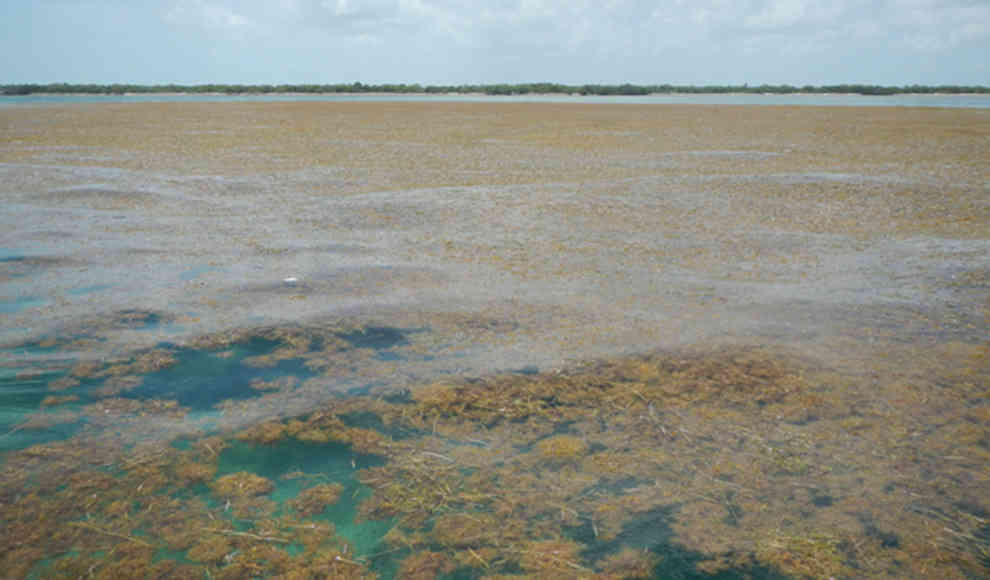A massive algae bloom has formed in the Atlantic Ocean, stretching from West Africa to the Caribbean. Scientists at the Harbor Branch Oceanographic Institute, part of Florida Atlantic University, have mapped the bloom using satellite imagery. The bloom is made up almost entirely of Sargassum, a type of seaweed that forms an important habitat for marine life. However, the bloom’s unprecedented size is causing concern among scientists, who believe that the main causes are deforestation in the Amazon rainforest and the use of fertilizers that increase nutrient levels in the water. The bloom is expected to exceed last year’s record size in 2019.
Sargassum blooms are an annual occurrence in the Atlantic, but the current bloom has never been seen before. The seaweed’s bladder-like structures allow it to float on the ocean’s surface and move with the currents. The bloom is a vital part of the ocean’s ecosystem, but its increasing size is causing problems. The seaweed can trap marine life and bury coral reefs, and its rotting smell can drive away tourists from coastal areas. The scientists believe that the bloom’s growth is due to the higher nutrient levels in the water caused by deforestation and fertilizer use.
The scientists used satellite imagery from the last 19 years to document the growth of the bloom, which has increased every year since 2011, except for 2013. The bloom reached a length of 8,850 kilometers last year, from West Africa to the Caribbean, and the scientists estimate that the biomass of the seaweed is over 20 million tons. The scientists believe that the bloom’s growth is not due to rising temperatures in the Atlantic, but to the higher nutrient levels in the water caused by deforestation and fertilizer use. Further studies will investigate whether these factors are responsible for the bloom’s growth or whether other factors are at play. Data from this year suggest that the bloom will be even larger than last year, but predictions are difficult due to the many factors that affect the seaweed’s growth.










